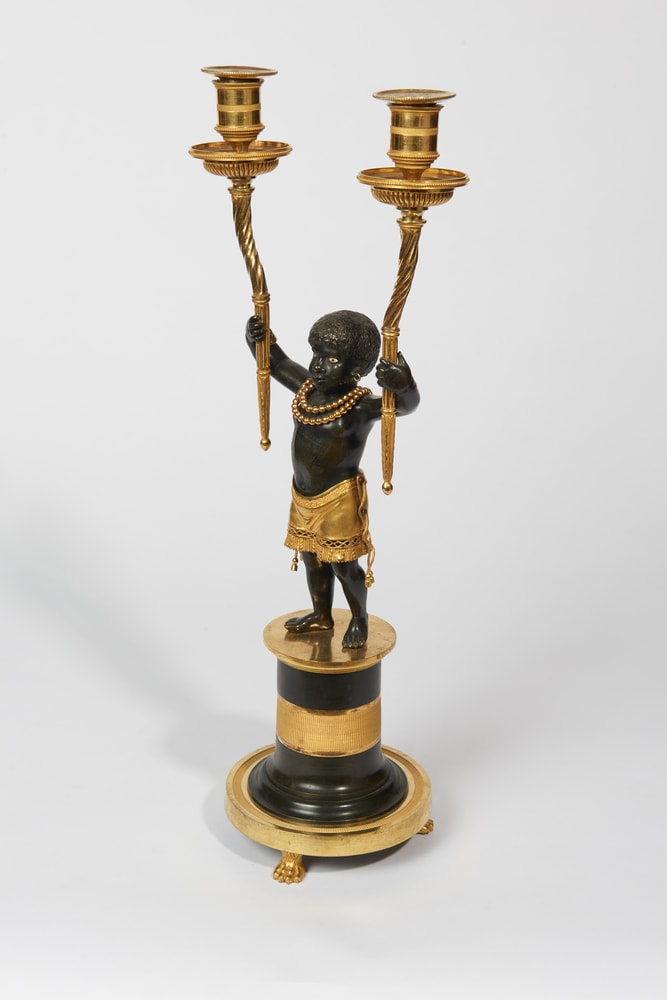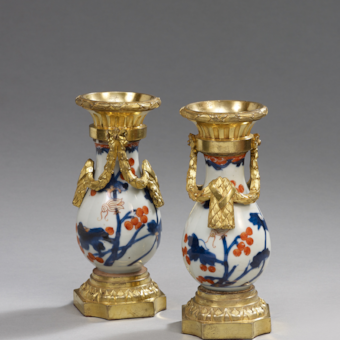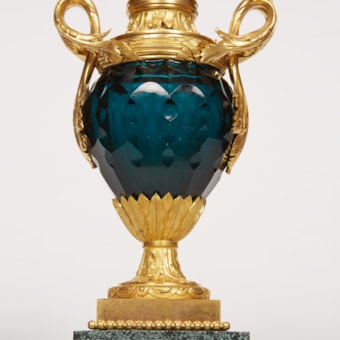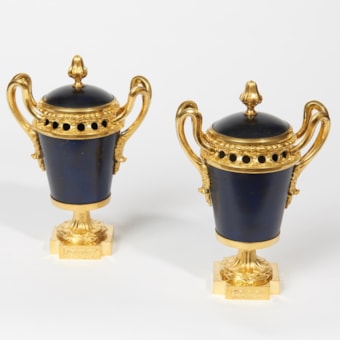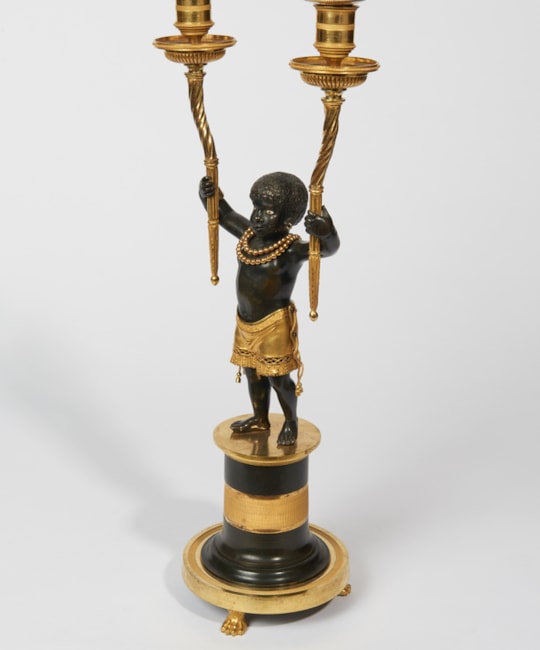Ref: 2313
A Pair of Rare Blackamoor Candelabra
Ref: 2313
A Pair of Rare Blackamoor Candelabra
Circa 1790 - 1800
Patinated Bronze Gilded Bronze
47.5 x 0 cm (18³/₄ x 0 inches)
Paris, France
Patinated Bronze Gilded Bronze
47.5 x 0 cm (18³/₄ x 0 inches)
Paris, France
Literature:
Jonathan Bourne/Vanessa Brett, Lighting in the Domestic Interior - Renaissance to Art Nouveau, London 1991, p. 158 Fig. 536
Exhibition:
An identical pair is located in the Musée François Duesberg, Mons/Belgium
Description: Model by Jean Simon Deverberie (Paris 1764–1824)
Patinated and gilded bronze, each with enameled eyes
Each figure holds two candlestick arms, both resting on a round, profiled plinth, each with paw-shaped feet.
Deverberie was an immensely successful designer, bronze artist, and dealer of furniture and furnishings of all kinds. Records show that he worked in Rue Barbette until 1800; four years later, he worked on Boulevard du Temple, and from 1812 to 1824, his firm, Deverberie & Compagnie, was located on Rue des Fosses-du-Temple. Deverberie was the most important bronze artist of his time and almost certainly the first to use the theme of the "noble savage" for a clock case, also called the "L'Afrique" or "au bon sauvage" pendulum clock. Literary works such as Daniel Defoe's "Robinson Crusoe" and the novel "Paul and Virginie" by Bernardin de Saint-Pierre were the source of inspiration for these pendulum clocks between 1795 and 1815.
Patinated and gilded bronze, each with enameled eyes
Each figure holds two candlestick arms, both resting on a round, profiled plinth, each with paw-shaped feet.
Deverberie was an immensely successful designer, bronze artist, and dealer of furniture and furnishings of all kinds. Records show that he worked in Rue Barbette until 1800; four years later, he worked on Boulevard du Temple, and from 1812 to 1824, his firm, Deverberie & Compagnie, was located on Rue des Fosses-du-Temple. Deverberie was the most important bronze artist of his time and almost certainly the first to use the theme of the "noble savage" for a clock case, also called the "L'Afrique" or "au bon sauvage" pendulum clock. Literary works such as Daniel Defoe's "Robinson Crusoe" and the novel "Paul and Virginie" by Bernardin de Saint-Pierre were the source of inspiration for these pendulum clocks between 1795 and 1815.
you may also like

